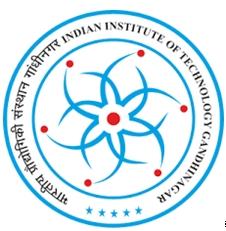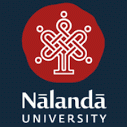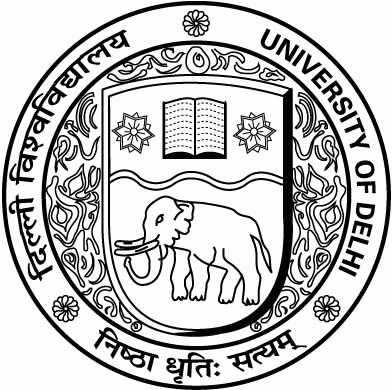- Home
- About
- Events
- Members
- About Members
- Member Institutes
- Algeria
- Argentina
- Australia
- Austria
- Bangladesh
- Brazil
- Bulgaria
- Canada
- China, People's Republic of
- Colombia
- Ecuador
- Egypt
- European Commission
- France
- Germany
- Ghana
- Hong Kong (People's Republic of China)
- India
- Indonesia
- Iran (Islamic Republic of)
- Israel
- Italy
- Japan
- Korea, Republic of
- Lao PDR
- Malaysia
- Mexico
- Morocco
- Nepal
- New Zealand
- Oman
- Phillippines
- Slovakia
- South Africa
- Sri Lanka
- Sudan
- Sweden
- Switzerland
- Chinese Taipei
- Thailand
- Turkey
- United Kingdom
- United States
- Vietnam
- Zimbabwe
- Membership
- Activities
- Resources
- GADRI Archives
- Home
- >
- Members
- >
- Member Institutes
- >
- India
 |
Indian Institute of Technology GandhinagarGujarat |
| Outline The Indian Institute of Technology Gandhinagar strives to offer the best undergraduate and graduate education in India with unmatched innovations in curriculum. The institute promotes critical thinking and an appreciation of the interdisciplinary character of knowledge, with an emphasis on the liberal arts, project oriented learning, compulsory courses in design and the life sciences, diversity and globalization. The five-week immersion Foundation Programme for all new undergraduate students was recognized with the World Education Award 2013 by the World Education Summit for innovations in engineering education. Nearly a quarter of its undergraduate students receive study abroad experience during their academic career. IIT Gandhinagar is committed to promoting excellence in science, technology, as well as the humanities and social sciences and to the development of rounded and nuanced minds. IIT Gandhinagar was founded in 2008 and is located in Palaj, Gandhinagar, Gujarat on the banks of river Sabarmati. Gandhinagar is in proximity to Ahmedabad which is one of the oldest living cities in India, known both for a rich cultural past as well as state-of-the-art infrastructure, thriving industries, and many modern amenities. The city is also the hub of prestigious academic and research institutes, such as the Indian Institute of Management, Ahmedabad, and the National Institute of Design. Gujarat's long standing mercantile and business tradition encourages excellence and entrepreneurship. IIT Gandhinagar offers BTech and MTech programmes in Chemical, Civil, Electrical, Mechanical and Materials Science and Engineering and also offers MSc programmes in Mathematics, Physics, Chemistry and Cognitive Science. It also offers MA programme in Society and Culture. Ph.D. programmes are offered in all the engineering and science disciplines such as Chemical, Biomedical, Civil, Electrical, Mechanical, Computer Science and Materials Science and Engineering, Chemistry, Physics, Mathematics, Earth Science, and Cognitive Sciences. Apart from the graduate programmes in engineering and science, institute also offers PhD in Literature, Philosophy, Psychology, Sociology, political sciences and Social Epidemiology. Safety Centre is one of the prominent centres at IIT Gandhinagar. The objective of the IIT Gandhinagar Safety Centre is to promote safety in public and private spheres, industry and the informal sector. The Safety Centre advances these objectives with activities to Discover (Research and Development), Teach (Offering safety courses in UG and graduate curriculum), Outreach (through Conferences, Workshops, Seminars, Symposia and training Professionals from Academia and Industry) and Practice. [detail] --> |
|
 |
Center of Excellence in Disaster Mitigation & Management
|
|
Outline The centre is a multidisciplinary research and education centre. The main aim of the educational program is to impart advanced knowledge on technical and managerial skills to the professionals to make them equipped with innovative technologies for effective mitigation and management of disasters for the overall benefit of the society. [detail] --> |
|
 |
Jindal School of Liberal Arts and Humanities
|
|
Outline Pedagogy becomes crucial because it is the act of teaching that is the eventual educational act, a drama unfolding everyday around a canonical text, an invitation to re-reading, as an unfolding invention. These attributes and approach make JSLH one of the best colleges for humanities. There is also the dream of democracy. Liberal arts and humanities provide the syllabus for a democratic way of life. It is here that cosmos, a community, a constitution and a syllabus can all integrate into a four-fold way of life we can call democratic. The ideas of a cosmos invokes world views anchored in religions and civilizations, creating a relation between man, nature and god, creating a multiverse of meanings, where old dichotomies between politics and religions, science and religion are re-explored. A cosmos needs a community or a neighborhood of communities to embed it and embrace it. A community needs a history, a story teller and an ethics of memory which becomes the basis of an ethics of caring. Liberal arts and humanities is fundamentally about responsibility, leadership and judgment, the creativity of standing up for something. [detail] --> |
|
 |
School of Ecology and Environment Studies (SEES)
|
|
Outline Rooted in the tradition of the ancient Nalanda University, the School aspires to generate critical understanding that will benefit the globe. The School also seeks to bridge the current gap in the study of environmental issues between the Western and the Eastern perspectives. It addresses pressing local, regional and global environmental problems of our times through education, research, collaborations, and policy recommendations. [detail] --> |
|
 |
Department of Geography, Delhi School of Economics
|
| Outline The department traces its origin to October 1959, when under the initiative of Professor V.K.R.V. Rao, the then Vice-Chancellor of the University and an eminent Economist, a Department of Human Geography was established as a constituent of the Delhi School of Economics. Professor George Kuriyan, a renowned Geographer of India at that time, was the first Professor and founder of the department. In 1966, Professor V.L.S. Prakasa Rao took over from him and guided the department until 1973. Since then, the department acquired a name and a distinctive identity in India and abroad. It draws students from all over India as well as abroad. The department has expanded many times over since 1973. The name of the department was changed to the Department of Geography in 1976 to indicate the widening scope of teaching and research activity in physical and human aspects of Geography. The Department has evolved many new courses, which have been widely acclaimed as the frontiers in Geography. The Faculty members undertake research projects from various agencies including University Grants Commission, Indian Council of Social Science Research, Council for Scientific and Industrial Research, Indo-Canadian Shastri Institute and Ministries of Government of India, which include Indian Space Research Organization, Department of Science and Technology and the Planning Commission.
Engage with national and international Geography Associations occupying post of Vice-President, IGU and Secretary General, NAGI. [detail] --> |
|


